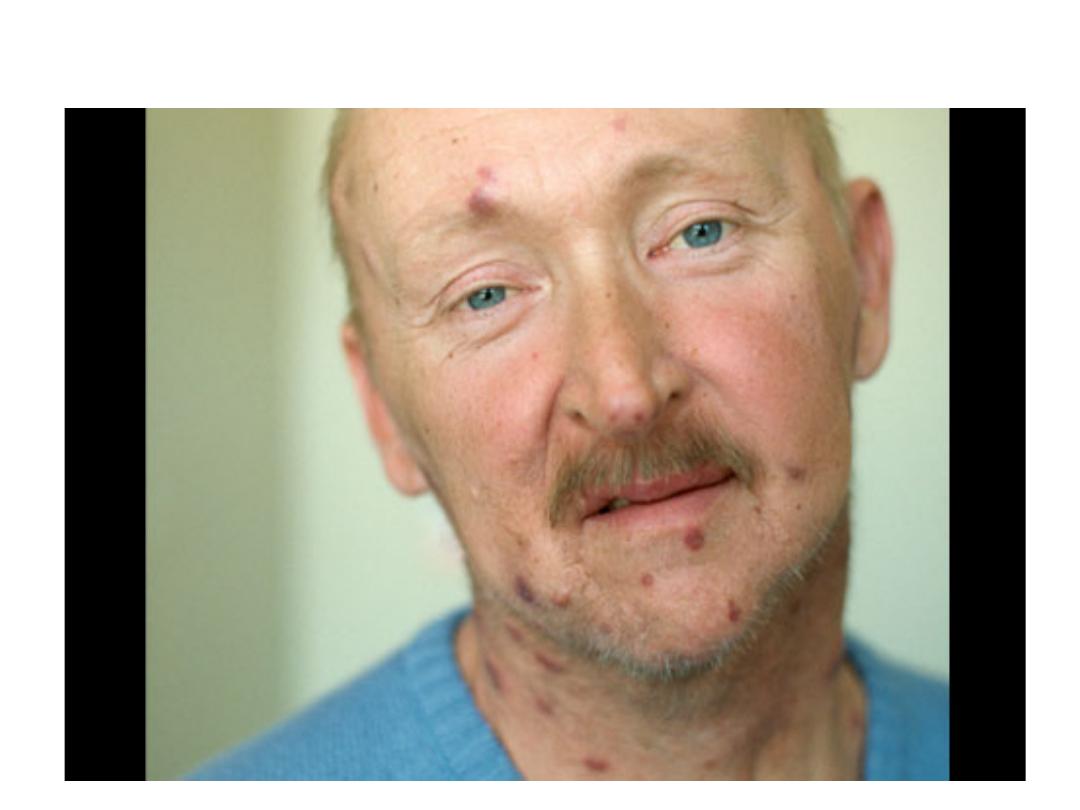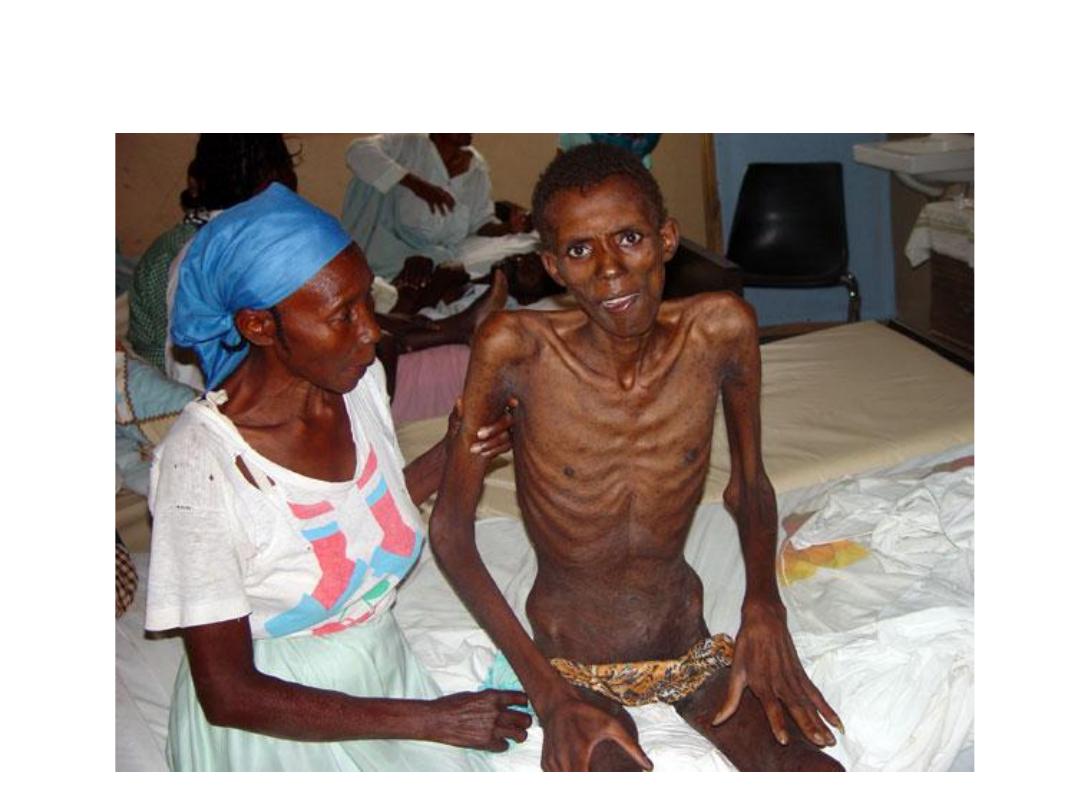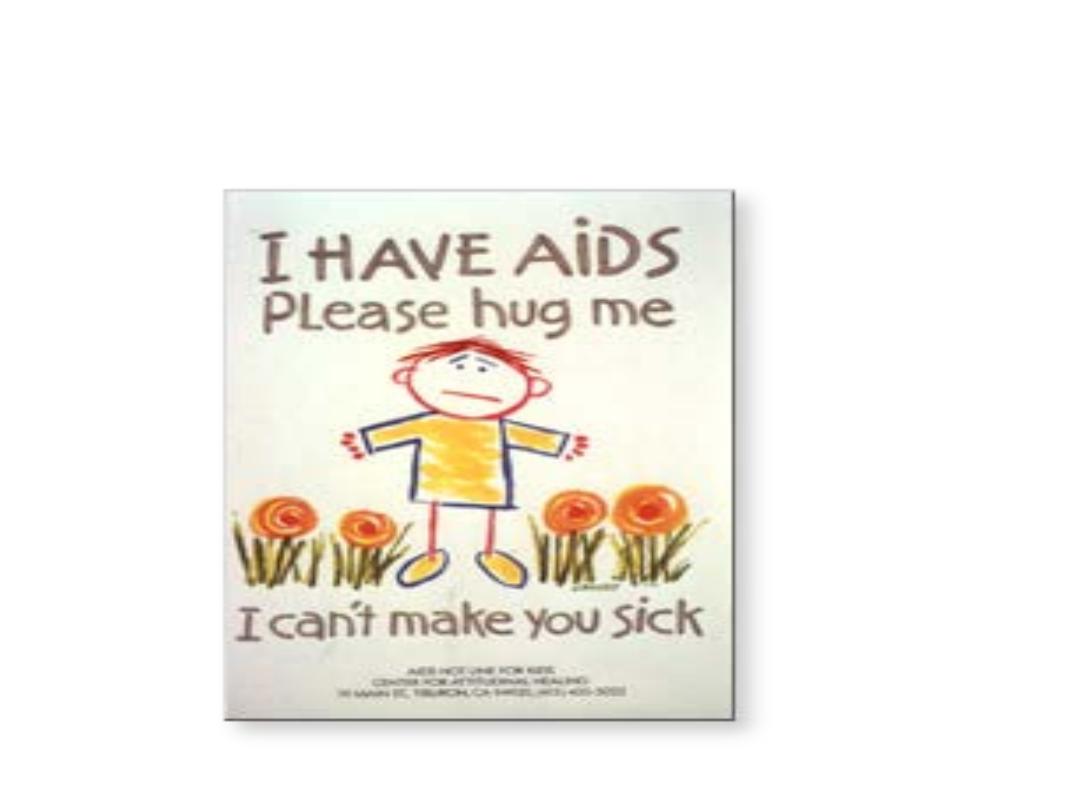
ACQUIRED IMMUNODEFICIENCY
SYNDROME ICD-10 B20-B24
(HIV infection, AIDS)
Dr. Nadia Aziz
C.A.B.C.M.
Community medicine department
Baghdad medical college

Objective
1- Define the acquired immunodeficiency
syndrome
2- Identify the causative agent
3- Identify the mode of transmission & the high
risk group
4- Identify the ways of prevention & management

Introduction
Acquired Immunodeficiency syndrome (AIDS) is
a term first used in 1981 by epidemiologists
concerned about the emergence of a cluster of
diseases associated with
loss of cellular
immunity in adults
who had no obvious reason
for presenting such immune deficiencies.

Introduction
AIDS
is the late clinical stage of infection with the
human immunodeficiency virus (
HIV
). Within weeks to
months after infection with HIV, many persons develop
an
acute self-limited mononucleosis-like
illness lasting
for a week or two.
They may then be free of clinical signs or symptoms for
months or years before other clinical manifestations
develop.

Introduction
More than a dozen
opportunistic infections
and
several
cancers
were considered to be
sufficiently
specific
indicators of the underlying
AIDS.


Other Presentations
Includes:
Tuberculosis
,
pneumococcal disease
and non-
typhoid
salmonellosis
, which are not
diseases of high virulence.
Bacterial pneumonia
is one of the commonest
presentations.

Diagnosis
All HIV-infected persons are regarded as AIDS
cases if:
1- CD4 cell count of
under
200/mm3
or
2- CD4 T-lymphocyte percentage of total
lymphocytes
under 14%,
regardless of clinical
status.

Diagnosis
The most commonly used screening test:
1-
EIA or ELISA
is highly sensitive and specific.
2-
Western blot test
.
detectable
antibodies
within 1–3 months after
infection
3-
HIV antigen
4-
PCR
tests to detect viral nucleic acid sequences..

Diagnosis
Passively
transferred maternal anti-HIV
antibodies often cause
falsely positive
anti-HIV
EIA tests in these children even up to the
age of 15 months.

Case-fatality
In the absence of effective anti-HIV treatment,
the AIDS case-fatality rate is
high
.
Survival time in many developing country
studies is often under
1
year,
In industrialized countries 80%–90% of
untreated patients used to die within
3–5
years
after diagnosis.

Infectious agent
Human immunodeficiency virus (HIV), a
retrovirus
.
Two serologically and geographically distinct types
with similar epidemiological characteristics,
HIV-1 and HIV-2.
The pathogenicity of HIV-2 may be
lower
than that
of HIV-1

Occurrence
AIDS was first recognized as a distinct clinical
entity in 1981.
Of the estimated 40 million persons (34–46
million) living with HIV infection or AIDS
worldwide.
The largest elements were estimated at 25–28.2
million in
sub-Saharan Africa.
In
sub-Saharan
Africa, AIDS is called "
slim disease
."


Occurrence
Globally, AIDS caused an estimated
3.1 million deaths in 2003 (2.5–3.5 million)

Reservoir
Humans HIV is thought to have recently
evolved from chimpanzee viruses.

Mode of transmission
Person to person
transmission through
1- Unprotected (heterosexual or homosexual)
intercourse
2- Contact of
abraded skin
or mucosa with body
secretions such as blood, CSF or semen.
3- The use of HIV-
contaminated needles
4- Transfusion of
infected blood
or its components
5- The
transplantation
of HIV-infected tissues or organs.

Mode of transmission
the presence of a concurrent sexually
transmitted disease, (ulcerative) can
facilitate
HIV transmission.

Mode of transmission
6- HIV transmitted from mother to child (MTCT or
vertical transmission
).
From 15% to 35% of infants born to HIV-positive
mothers are infected through
placental processes
at
birth.
HIV-infected women can transmit infection to their
infants through
breast-feeding
and this can account for
up to half of mother-to-child HIV transmission.


Incubation period
Variable.
The time from infection to the development of
detectable antibodies is generally
1–3 months
.
The time from HIV infection to diagnosis of
AIDS range from
less than 1 year to 15 years or
longer.

HIV infection, AIDS
The
only factor
that has been shown to affect
progression
from HIV infection to the
development of AIDS
is
age
at initial infection
:
adolescent and adults (males and females) who
acquire HIV infection at an
early age
progress
to AIDS
more slowly
than those infected at an
older age.

Period of communicability
Begins
early
after HIV infection and extends
throughout life
.
Infectivity increases:
1- During the
first months
2- With
viral load
3- With
worsening clinical status
4- With the presence of
other STIs

Susceptibility
Factors increase susceptibility
1- Presence of
other STIs
(ulcerative)
2-
Not being circumcised
for males, a factor
possibly related to the general level of penile
hygiene.

Interaction with other infections
1-The major interaction is with
Mycobacterium
tuberculosis infection
.
Persons with latent tuberculous infection who
are infected with HIV develop clinical
tuberculosis at an increased rate.
Lifetime risk of developing tuberculosis is
multiplied by a factor of 6–8

Interaction with other infections
2- Other adverse interactions with HIV infection
include
pneumococcal
infection, non-Typhiod
salmonellosis
, falciparum
malaria
and
visceral
leishmaniasis
.

Methods of control
A- Preventive measures
1)
Public and school health education
must stress
that having multiple and especially concurrent
and/or overlapping sexual partners or sharing
drug both increase the risk of HIV infection.
Programs for school-age youth
should address the
needs and developmental levels of both
students and those who do not attend school.

Preventive measures
2) The only absolutely sure way to avoid
infection through sex to
abstain
from sexual
intercourse or to engage in mutually
monogamous sexual
intercourse only
In other situations,
latex condoms
must be
used correctly

Preventive measures
3) Expansion of facilities for
treating drug users
reduces HIV transmission.

Preventive measures
4) HIV
testing and counselling
for:
a) persons who are ill or involved in
high-risk
behaviors
b) attenders at antenatal clinics, to diagnose
maternal
infection
c) couple counselling (
marital or premarital
)
d) confidential HIV counselling and testing for the
“
worried well
”.

Preventive measures
5) All donated units of blood must be tested for
HIV antibody, only donations testing negative can
be used.
People who have engaged in behaviors that place
them at
increased risk of HIV infection should not
donate
plasma, blood, organs for transplantation,
tissue or cells (including semen for artificial
insemination).

Preventive measures
6) Care must be taken in handling, using and
disposing of needles or other sharp instruments
.
Health care workers should wear latex gloves,
eye protection and other personal
protective equipment in order to avoid contact
with blood or with fluids.

Preventive measures
7) WHO recommends
immunization of
asymptomatic HIV infected children
with the
EPI vaccines.
Those who are symptomatic
should not
receive
BCG vaccine.

B. Control of patient, contacts and the
immediate environment:
1)
Report
to local health authority: Class 2
2) Isolation: Isolation of the HIV-positive
person is
unnecessary
, ineffective and
unjustified.

B. Control of patient, contacts and the
immediate environment:
3) Notification of contacts and source of
infection: The infected patient should
ensure
notification of sexual and needle sharing
partners whenever possible
.
Notification by the health care provider is
justified only when the patient, after
counselling, still refuses to notify his/her
partner(s), and this will not harm the index
case.

B. Control of patient, contacts and the
immediate environment:
Prior to the development of relatively effective
antiretroviral treatment
1-
Prophylactic
use of oral trimethoprim-
sulfamethoxazole, with aerosolized pentamidine is
recommended to prevent P. carinii pneumonia.
2-
All HIV
infected persons should do
tuberculin
skin tests
and be evaluated for active TB.

B. Control of patient, contacts and the
immediate environment:
3- If active TB is found,
anti tuberculosis
treatment
should be given.
If no active TB is found, patients who are
tuberculin-positive
or were
recently exposed
should be offered
preventive treatment
with
isoniazid for 12 months

Treatment
AIDS must be managed as a chronic disease,
antiretroviral treatment is complex
,
involving a
combination of drugs
:
resistance
will rapidly appear if a single drug is
used.
The drugs are toxic
and
treatment must be lifelong
.

Treatment
A successful treatment is not a cure
, although it
results in suppression of viral replication.
In general, a
protease inhibitor
and
two
non-nucleoside reverse transcriptase inhibitors
should be used initially.

Post Exposure Prophylaxis
The factors to consider before recommending post
exposure prophylaxis (PEP) includes:
1- The
nature
of the exposure
2- Whether the exposed worker might be
pregnant
3- The local occurrence of
drug resistant
HIV strains.

Post Exposure Prophylaxis
Include a basic
4-week regimen
of two drugs
(zidovudine and lamivudine) for most HIV
exposures
An expanded regimen that includes the
addition of a protease inhibitor (indinavir or
nelfinavir)

Thank You
